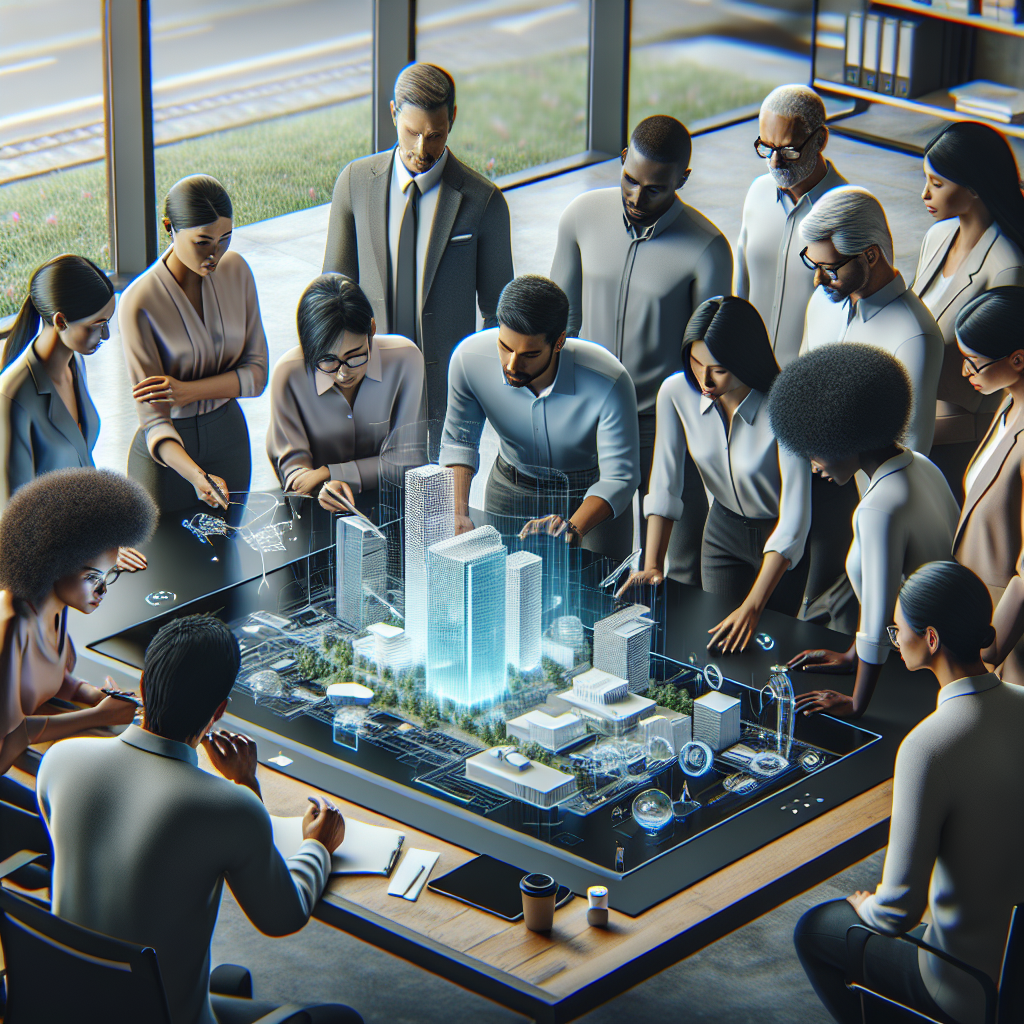In recent years, the field of architecture has seen a significant transformation with the integration of artificial intelligence (AI) tools. These tools have revolutionized the way architects collaborate, communicate, and design buildings. By harnessing the power of AI, architects can streamline their workflow, optimize their designs, and improve project outcomes.
AI tools for enhancing collaboration in architecture come in various forms, from generative design software to virtual reality platforms. These tools are designed to help architects work more efficiently, make better decisions, and create more innovative designs. In this article, we will explore some of the key AI tools that are transforming the architecture industry and how they are enhancing collaboration among architects.
Generative Design Software
One of the most significant AI tools in architecture is generative design software. This software uses algorithms to explore a vast number of design options and generate optimized solutions based on specific constraints and objectives. By using generative design software, architects can quickly iterate through different design options, evaluate their performance, and identify the most efficient and innovative solutions.
Generative design software allows architects to explore a wide range of design possibilities that may not be immediately apparent through traditional design methods. By harnessing the power of AI, architects can uncover new design opportunities, optimize their designs for performance and sustainability, and create more complex and organic forms.
Virtual Reality Platforms
Another key AI tool for enhancing collaboration in architecture is virtual reality (VR) platforms. VR technology allows architects to create immersive 3D environments that enable stakeholders to experience and interact with a building design before it is built. By using VR platforms, architects can collaborate with clients, consultants, and other team members in a more intuitive and engaging way.
VR platforms enable architects to communicate their design ideas more effectively, gather feedback from stakeholders, and make informed design decisions. By immersing stakeholders in a virtual environment, architects can ensure that everyone involved in a project has a shared understanding of the design vision and can contribute to the design process more effectively.
Machine Learning Algorithms
Machine learning algorithms are another powerful AI tool that is transforming collaboration in architecture. These algorithms analyze large datasets to identify patterns, trends, and insights that can inform design decisions and optimize project outcomes. By using machine learning algorithms, architects can uncover valuable insights about user preferences, building performance, and design trends that can inform their design process.
Machine learning algorithms can help architects make more informed decisions about building materials, construction methods, and design strategies. By analyzing data from past projects and industry trends, architects can identify opportunities to improve project performance, reduce costs, and enhance the quality of their designs.
FAQs
Q: How can AI tools enhance collaboration in architecture?
A: AI tools can enhance collaboration in architecture by streamlining the design process, optimizing designs for performance and sustainability, and enabling stakeholders to interact with and contribute to the design process in a more intuitive and engaging way.
Q: What are some examples of AI tools for enhancing collaboration in architecture?
A: Some examples of AI tools for enhancing collaboration in architecture include generative design software, virtual reality platforms, and machine learning algorithms. These tools enable architects to explore a wide range of design possibilities, communicate their design ideas more effectively, and make more informed design decisions.
Q: How can architects incorporate AI tools into their design process?
A: Architects can incorporate AI tools into their design process by investing in AI software and platforms that are specifically designed for architecture. By using these tools, architects can optimize their designs, collaborate more effectively with stakeholders, and create more innovative and sustainable buildings.
Q: Are AI tools replacing the role of architects in the design process?
A: AI tools are not replacing the role of architects in the design process but rather enhancing their capabilities and enabling them to work more efficiently and effectively. Architects still play a crucial role in the design process by providing creative input, critical thinking, and design expertise that AI tools cannot replicate.
Q: How can architects stay up to date with the latest AI tools and technologies in architecture?
A: Architects can stay up to date with the latest AI tools and technologies in architecture by attending industry conferences, workshops, and seminars, and by networking with other professionals in the field. Additionally, architects can invest in continuing education and training programs to learn how to use AI tools effectively in their design practice.

